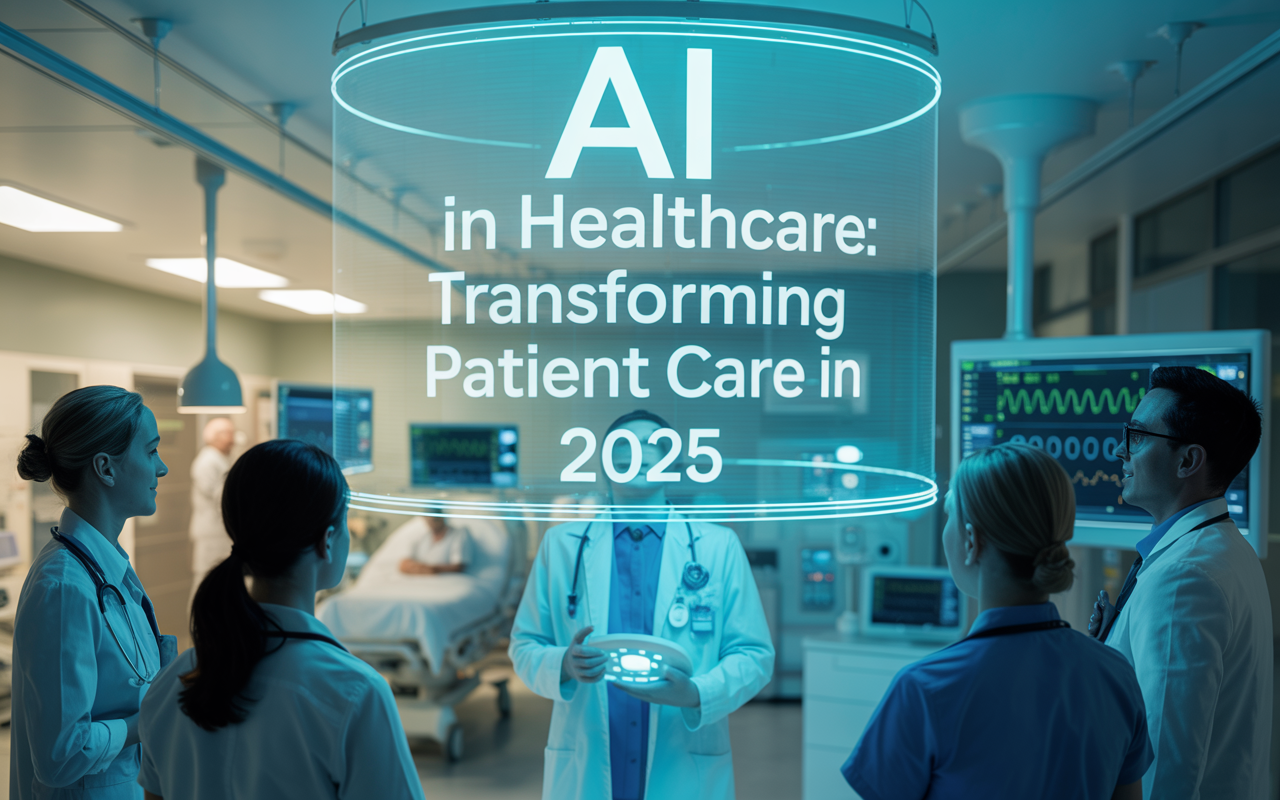Introduction
Artificial Intelligence (AI) is revolutionizing the healthcare industry, offering innovative solutions to longstanding challenges. In 2025, AI’s integration into healthcare systems is enhancing diagnostic accuracy, streamlining administrative tasks, and personalizing patient care.
Enhancing Diagnostics and Treatment
AI-powered tools are aiding clinicians in diagnosing diseases more accurately and swiftly. For instance, machine learning algorithms can analyze medical imaging to detect anomalies such as tumors or fractures, often with greater precision than traditional methods. These advancements not only improve patient outcomes but also reduce the burden on healthcare professionals.
Streamlining Administrative Processes
Administrative tasks, such as scheduling appointments and managing patient records, are being automated through AI, leading to increased efficiency. For example, AI-driven chatbots can handle routine inquiries, freeing up staff to focus on more complex responsibilities. This automation reduces operational costs and enhances the patient experience.
Personalizing Patient Care
AI enables the personalization of treatment plans by analyzing a patient’s medical history, genetic information, and lifestyle factors. This data-driven approach allows for tailored therapies that are more effective and have fewer side effects. Moreover, AI can monitor patient progress in real-time, adjusting treatments as necessary to ensure optimal outcomes.
Addressing Challenges and Ethical Considerations
While AI offers numerous benefits, it also presents challenges, including data privacy concerns and the need for robust regulatory frameworks. Ensuring the ethical use of AI in healthcare requires transparent algorithms, unbiased data, and ongoing oversight to prevent disparities in care.
Conclusion
AI is poised to transform healthcare by improving diagnostics, streamlining operations, and personalizing patient care. As technology continues to evolve, it is imperative to address ethical considerations and ensure equitable access to these advancements for all patients.
2. AI in Education: Revolutionizing Learning in 2025
Introduction
The integration of Artificial Intelligence (AI) into education is reshaping how students learn and teachers instruct. In 2025, AI is facilitating personalized learning experiences, automating administrative tasks, and preparing students for a technology-driven future.Mastery Coding+3ubtecheducation.com+3DigitalOcean+3
Personalized Learning Experiences
AI-driven platforms can assess individual student performance and adapt content to meet their unique needs. This personalization ensures that students receive support in areas where they struggle and are challenged in areas where they excel, leading to improved academic outcomes.
Automating Administrative Tasks
Educators often spend significant time on administrative duties, such as grading and scheduling. AI can automate these tasks, allowing teachers to dedicate more time to instruction and student engagement. For instance, AI-powered grading systems can evaluate assignments and provide immediate feedback, enhancing the learning process.DigitalOcean
Enhancing Teacher Support
AI tools can assist teachers by providing insights into student performance, identifying learning gaps, and suggesting instructional strategies. This support enables educators to tailor their teaching methods to better meet the needs of their students.
Preparing Students for the Future
Incorporating AI into the curriculum equips students with essential skills for the modern workforce. By engaging with AI technologies, students develop critical thinking, problem-solving, and digital literacy skills that are increasingly valuable in various industries.
Addressing Ethical and Equity Concerns
The use of AI in education raises concerns about data privacy, algorithmic bias, and equitable access to technology. It is crucial to implement policies that protect student information, ensure fairness in AI applications, and provide resources to underserved communities to bridge the digital divide.
Conclusion
AI is revolutionizing education by personalizing learning, reducing administrative burdens, and preparing students for a technologically advanced society. As we embrace these innovations, it is essential to address ethical considerations and strive for equitable implementation across all educational settings.ubtecheducation.com
3. AI in Finance: Redefining Financial Services in 2025
Introduction
Artificial Intelligence (AI) is transforming the financial sector by enhancing decision-making, improving customer experiences, and increasing operational efficiency. In 2025, financial institutions are leveraging AI to stay competitive and meet evolving client expectations.
Enhancing Decision-Making and Risk Management
AI algorithms can analyze vast amounts of data to identify patterns and predict market trends, aiding in investment decisions and risk assessment. This predictive capability allows financial professionals to make informed choices, manage portfolios effectively, and mitigate potential losses.
Improving Customer Experiences
AI-powered chatbots and virtual assistants provide customers with instant support, answering queries, and assisting with transactions around the clock. These tools enhance customer satisfaction by offering personalized services and reducing wait times.
Streamlining Operations
Financial institutions are using AI to automate routine processes, such as fraud detection and compliance monitoring. By identifying unusual transactions and ensuring adherence to regulations, AI helps maintain the integrity of financial systems and reduces the risk of financial crimes.
Facilitating Financial Inclusion
AI can analyze alternative data sources to assess creditworthiness, enabling individuals without traditional credit histories to access financial services. This inclusivity promotes economic growth and provides opportunities for underserved populations.
Addressing Challenges and Ethical Considerations
The adoption of AI in finance raises concerns about data security, algorithmic transparency, and potential job displacement. Financial institutions must implement robust cybersecurity measures, ensure the explainability of AI models, and provide workforce training to adapt to technological changes.
Conclusion
AI is redefining financial services by enhancing decision-making, improving customer interactions, and promoting financial inclusion. As the industry continues to evolve, it is vital to address ethical challenges and ensure that AI technologies are implemented responsibly and equitably.


